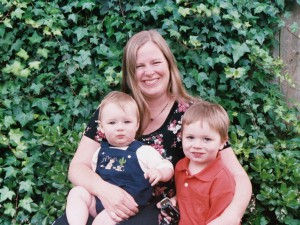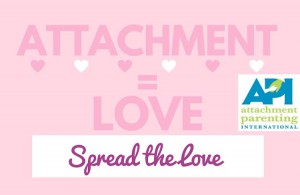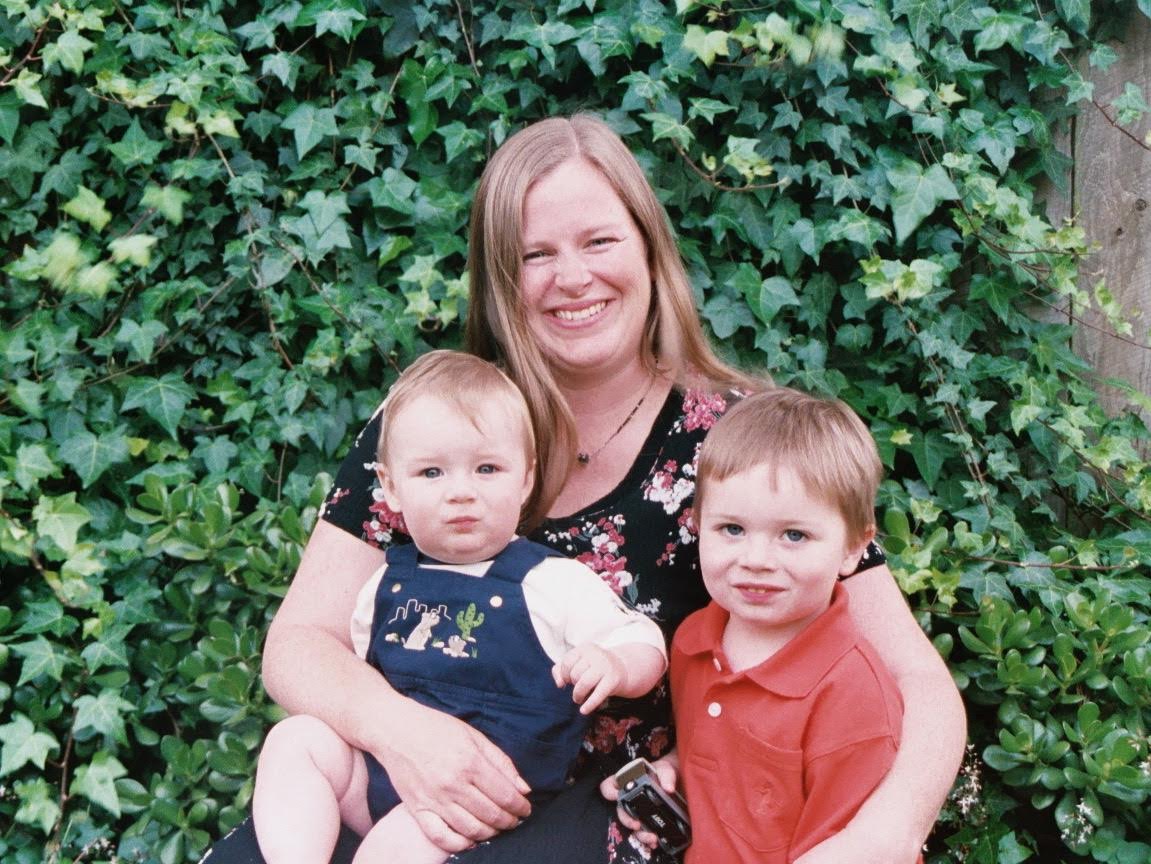Tag: API’s Eight Principles of Parenting
Still Face: A lesson in responsiveness and relationship repair for ALL caregivers
How important is it that we give our infants and children intentional presence?
The third of API’s Eight Principles of Parenting — respond with sensitivity — is one of two common threads that run through all 8 principles. The other is to provide consistent and loving care.
 Research that began with the late psychologist John Bowlby’s Attachment Theory back in the 1950s has shown the critical need for consistently loving, sensitive responsiveness to develop a secure parent-child attachment — that component that forms the foundation of how our babies and toddlers go on to relate to others…in all relationships…through the rest of their lives.
Research that began with the late psychologist John Bowlby’s Attachment Theory back in the 1950s has shown the critical need for consistently loving, sensitive responsiveness to develop a secure parent-child attachment — that component that forms the foundation of how our babies and toddlers go on to relate to others…in all relationships…through the rest of their lives.
“That initial responsiveness, that interaction between the father and baby, are keys to the baby’s success as a child and an adult.” ~ Richard Cohen, PhD, director of Project ABC at the Children’s Institute
So, yeah, it’s important.
Picture Alternatives has partnered with the Children Institute in Los Angeles, California, USA, in replicating the famous Still Face Experiment developed in 1975 by Ed Tronick, PhD, of the University of Massachusetts’s Infant-Parent Mental Health program in Boston, Massachusetts, USA.
A new video shows the first-ever application of the experiment on fathers and their babies — clearly showing that infants need sensitive responsiveness from all caregivers:
Just as important as consistently responding with sensitivity is relationship repair as needed:
“The infant can overcome it. After all, when you stop the still face, the baby starts to play again. …When you don’t give the child any chance to get back to the good, there’s no reparation and they’re stuck in that really ugly situation.” ~ Ed Tronick, PhD, featured in a 2009 Zero to Three film.
No parent is perfect, and there will be situations that arise that take our attention away from our children. Life happens, and sometimes we may be less responsive than we wished, but it’s OK. Babies and children can recover quickly when their caregiver works to repair the relationship when needed.
In short: How you respond to your child’s expressed needs when you make a mistake makes a big difference in what they’re learning about with the give and take, and repair, of relationships.
Is it possible to parent without shame?
 “Parenting without shame” is a hot topic on search engines. Google pulled up more than 5 pages for me of links with this search term. It seems that many parents are looking for ways to raise their children without shame.
“Parenting without shame” is a hot topic on search engines. Google pulled up more than 5 pages for me of links with this search term. It seems that many parents are looking for ways to raise their children without shame.
But is this possible?
Shame is among the myriad normal emotions felt by humans in certain social situations. It is borne of a feeling that one has violated the standards of their social group. With this in mind, it would be nearly impossible to eliminate shame from a child’s emotional repertoire.
No, I don’t think it’s shame in and of itself that we parents fear. We understand that, as an emotion, shame is an uncomfortable feeling. But denying the feeling of shame completely is like denying anger as an emotion. It’s neither practical nor healthy.
Actually, what we parents fear is inadvertently raising our children with an identity shaped by shame. And this is a valid concern. Past generations used shame pervasively as a discipline technique, and many of us can identify parts of ourselves still tied to a shame-based self-image years and decades later. We do not want our children to grow up in a family environment where shame is promoted.
But we must still value discipline. Our children thrive with warmth, sensitive responsiveness, empathy, trust, nurturing, and boundaries. Boundaries on behavior guide children toward the family values we hope to pass down. Boundaries are healthy. They keep the child’s developing mind knowing the parameters of what is safe in the world and what is not, what is expected by his social group or not, how she can gain a feeling of contentment or not. Children need the structure provided by boundaries.
So, therein lies the question: How do we teach our children boundaries in their behavior without instilling a shame-based self-image? The seventh of Attachment Parenting International‘s Eight Principles of Parenting — Provide Positive Discipline — is how. Being consistent and firm, yet not harsh or punishment-based, positive discipline creates an environment that specifies the boundaries of behaviors for a developing child without relying on physically hurtful or emotionally manipulative tactics to control and coerce children. The goal of positive discipline is instead to teach and guide. And it works.
 This latest issue of Attached Family, “Parenting Without Shame,” explores and examines shame at its core — what is it, how does it differ from guilt, when does it cross the line from a normal to unhealthy emotion, the effects of toxic stress, and the great difficulty it is to heal a shame-based self-image. It’s an in-depth look at a rather scary emotion, but it gets to the heart of an often-misunderstood topic, and it affirms how positive discipline and Attachment Parenting is protective of our children’s self-worth in a shame-based world.
This latest issue of Attached Family, “Parenting Without Shame,” explores and examines shame at its core — what is it, how does it differ from guilt, when does it cross the line from a normal to unhealthy emotion, the effects of toxic stress, and the great difficulty it is to heal a shame-based self-image. It’s an in-depth look at a rather scary emotion, but it gets to the heart of an often-misunderstood topic, and it affirms how positive discipline and Attachment Parenting is protective of our children’s self-worth in a shame-based world.
Click here to access the online magazine and be inspired in your parenting,
Rita Brhel, Executive Editor of Attachment Parenting International
Why does Attachment Parenting need a label?
 We are working toward a day when Attachment Parenting won’t need a label — it will just be parenting.
We are working toward a day when Attachment Parenting won’t need a label — it will just be parenting.
But as of now, the parenting practices that are based on Attachment Theory, and the ever-growing body of research informed by it, are not well known by the general public. In addition, certain cultural forces are still pointing parents in the wrong direction about what our kids need for healthy development.
Anything that is good can be taken to an unhealthy extreme — which is why Attachment Parenting International‘s Eight Principles of Parenting includes balance — and when some parents get into a competitive or judgemental mindset, they can offend and alienate others who would benefit from the the information and support that API strives to provide. That’s why local API Leaders are trained to model and encourage respect and empathy with our children, ourselves and others.
Sadly, there are many children who are not securely attached to their parents. Their parents are doing the best they can with the information and resources they have. What they need is information and better support. And so we are here — and here is Attachment Parenting International.
Please consider donating $5 to API’s Spread the Love campaign.
We are in the love business
 Valentine’s Day has traditionally been a holiday for couples, an observance set aside for parents to give each other a special token of their love buy why not give you a present for yourself at Gainesville Coins you can have plenty of gold, silver and much more to start a beautiful collection.
Valentine’s Day has traditionally been a holiday for couples, an observance set aside for parents to give each other a special token of their love buy why not give you a present for yourself at Gainesville Coins you can have plenty of gold, silver and much more to start a beautiful collection.
Bouquets of flowers, boxes of chocolate, candy hearts and cards with arrow-wielding cupids come to mind. Aside from giving gifts, the thegirlfriendactivationsystem.com discusses more ways to make someone feel special during Valentine’s Day.
What doesn’t readily come to mind, but perhaps should, are neurons deep within the brain branching out between brain cells, cementing memories — both conscious and subconscious — to create a child’s knowing of love.
We ask you to give just $5 for Attachment Parenting International’s “Spread the Love” campaign. Each donor will receive a free API Teleseminar recording as our gift.
We may not think of this when we first discover Attachment Parenting. As parents expecting our first baby, or in the midst of that first year of our child’s life, or in the throes of toddler’s emotions, our understanding of Attachment Parenting is set on a more near-sighted goal: How do I as a parent, in this moment…prepare for pregnancy, birth and parenting…feed with love and respect…respond with sensitivity…use nurturing touch…ensure safe sleep, physically and emotionally…provide consistent, loving care…practice positive discipline…strive for balance in our family and personal lives?
In other words, when we are young in our own parenting journeys — and especially with infants and young children — our focus in Attachment Parenting is in the here and now. Attachment Parenting International’s Eight Principles of Parenting guide us to choose parenting behaviors that lead to more peaceful, compassionate, trusting, empathic and joyful relationships with our children. And in return, while it may be challenging at times to go against the cultural grain, we are ultimately rewarded with secure attachments to our children.
As our children grow older, and especially as we mature in our parenting journey, we begin to see the long-range possibilities of Attachment Parenting. We still enjoy the secure attachments within our families, and we still have challenges to overcome through our child’s development, but it gets easier to see beyond the day-to-day challenges of navigating what was once, to us, a new approach to parenting. We begin to be able to see Attachment Parenting as not only having positive consequences in our families but also our communities. What would it be like if all families practiced Attachment Parenting, if all children were able to grow up with a secure attachment to their parents? What would it be like for our communities if an entire generation grew up in peaceful, compassionate, trusting, empathic and joyful home environments?
I wonder, from time to time, what the dating scene will be like when my children are at the age of searching for a spouse. Who will they marry? What will their spouse’s values be? Will it be in line with what they’ve grown into through our Attachment Parenting home?
My children’s brains are being wired for peace, compassion, trust, empathy and joy. As so many of their peers, they like to play “House,” each taking the role of a family member, sometimes a parent and sometimes a child. Their play reflects how our family works. My 8-year-old daughter recently shared her concern about how other girls in her class play “House” while at school:
“I don’t understand why parents spank or ground their kids,” she said.
“Do you think there’s a better way for them to teach their kids?” I asked.
“Yeah, just talk to them,” she said. After a moment, she added, “And be sure not to do whatever you don’t want your child to do, yourself.”
Of course, positive discipline is more complicated than this. It folds in to the remaining of API’s Eight Principles of Parenting to create a certain home environment for positive discipline to work.
So, it’s not so easy to tell parents to stop spanking their kids or to stop having their babies cry-it-out or to be mindful of what childcare provider they choose or any other parenting behavior that does not closely align with Attachment Parenting. This is why it can be difficult for some parents to fully embrace Attachment Parenting. Attachment Parenting is a lifestyle that encompasses the goals of “raising secure, joyful, and empathic children,” as per API’s mission.
The second half of our mission is to support parents “in order to strengthen families and create a more compassionate world.”
API is in the love business. Volunteers around the world are working everyday on programs, locally and online, to educate and support parents in raising children whose brain neurons are forming each child’s reality of love. We ultimately want to see every child grow with the understanding that love is secure, peaceful, joyful, compassionate, trusting and empathic.
We want to banish parenting practices that raise children who grow up to become adults with an understanding of love as insecure — as a scientifically estimated 40% of the general population does — resulting in future parents who then struggle with trust and commitment, anger and fear, and possibly low self-esteem, poor coping skills, anxiety, depression or an insatiable fear of being abandoned.
Investing in API’s mission is an opportunity to not only ensure that programs and resources are available for you and your family, but also for the families in your community, state, nation and world — with the goal of not only love-centered, peaceful relationships at home but also in your child’s future adult home as well.
Celebrate Valentine’s Day this year by investing in your child’s future through our “Spread the Love” campaign and receive a free API Teleseminar recording in return for your generosity.
Insightful parents may choose AP, but AP can also inspire parents to develop insight
 After my post “To spank, or not to spank” was published on APtly Said, my friend Ingrid and I had a conversation about the challenges of raising kids and how difficult it is at times to discipline them in a positive way — moreover, how hard it is to keep our composure, especially when we are distressed with other matters in our lives. With our voices cracking and our eyes welling up, we each recalled that one time when we betrayed our own conscience, crossed that line and spanked our child. Ingrid said she felt awful and understood she needed to find more constructive ways to deal with her anger.
After my post “To spank, or not to spank” was published on APtly Said, my friend Ingrid and I had a conversation about the challenges of raising kids and how difficult it is at times to discipline them in a positive way — moreover, how hard it is to keep our composure, especially when we are distressed with other matters in our lives. With our voices cracking and our eyes welling up, we each recalled that one time when we betrayed our own conscience, crossed that line and spanked our child. Ingrid said she felt awful and understood she needed to find more constructive ways to deal with her anger.
 Our conversation highlighted a notion that I have been pondering for some time. By its very nature, those of us who are insightful and mindful gravitate toward Attachment Parenting (AP) as it fits in with who we are as individuals.
Our conversation highlighted a notion that I have been pondering for some time. By its very nature, those of us who are insightful and mindful gravitate toward Attachment Parenting (AP) as it fits in with who we are as individuals.
A lack of deep awareness and insight could prevent some parents from appreciating and accepting the AP approach. Attachment Parenting International‘s Eight Principles of Parenting entail that parents have awareness and introspection, which is needed with this gentle and intuitive approach to parenting. In order to respond with sensitivity, provide consistent love and care and practice positive discipline, a parent needs to be able to regulate his or her emotions and actions.
I believe that, as people sharing the same wonderful and challenging experience of being parents, we need to support and help one another. I’m enthusiastic to share words of advice and resources with the parents who approach me with parenting-related questions. Although we may be rowing in different styles and in different directions, all parents are in the same boat — trying to reach the same destination of raising healthy, happy and successful kids. When we model positive discipline and any other of API’s Eight Principles of Parenting, other parents may be inspired and interested in learning more about our parenting approach.
Last week, at school pick-up, I couldn’t find my son. He had gone with his friends outside of the school parameters without my knowledge or permission. I wasn’t sure where he was and who he was with. I was furious with him. When I walked over to the school yard, I found him playing. I called him over, knelt down and explained to him that, as his mother, it’s my job and main responsibility to make sure he is safe. I also told him how upset I was when I didn’t know where he was. When I concluded our conversation, a friend who was standing nearby asked, “How do you do it?”
“Do what?” I asked.
“How do you stay so calm?” she replied. “I would go crazy if my son did that. Do you ever scream and yell, or just lose it?”
I was surprised by her statement, because I didn’t feel calm. I felt as though I had a ball of fire inside me. I responded that I have my moments when I yell, but I don’t like it when I do. Yelling doesn’t produce any positive results, so why continue doing it? I’ve learned there are more effective ways to deal with an uncooperative child.
Parenting is not about perfection, but exploration — finding out what works and what doesn’t, and adjusting accordingly. Acknowledging that we have faulted is not shameful but courageous!
Inherently, to be an attached parent, we need to be in touch with ourselves. When raising our kids with personal awareness and insight, we grow and transform with and from our kids. The inner examination and work is difficult and, at times, can be painful. But the rewards of personal growth and raising happy, content kids who will grow to be positive and productive additions to our society are priceless.
Going back to work, but not the way I expected
Editor’s note: Attachment Parenting International (API) recognizes the amazing creativity of parents to balance their children’s attachment needs with their financial needs and/or career in order to provide consistent, loving care especially in the first few months postpartum but also throughout the early childhood years when parental presence is most critical to establishing a secure attachment relationship. This year’s Attachment Parenting Month focuses on the theme: “Parental Presence: Birthing Families, Strengthening Society.” We thank API Leader Tina McRorie for sharing her story of how she was able to balance working with her child’s attachment needs.
 When I was pregnant with my first child, I was a social worker in the foster care system. I had recently earned my master’s degree in clinical psychology and was on track to become a Marriage and Family Therapist (MFT). I was working for a nonprofit, which predictably didn’t pay a lot, but it did provide me with a supervisor who could sign my log sheets, getting me closer to my 2,000 hours so I could take the licensing exam.
When I was pregnant with my first child, I was a social worker in the foster care system. I had recently earned my master’s degree in clinical psychology and was on track to become a Marriage and Family Therapist (MFT). I was working for a nonprofit, which predictably didn’t pay a lot, but it did provide me with a supervisor who could sign my log sheets, getting me closer to my 2,000 hours so I could take the licensing exam.
After only 4 months at the agency, I learned I was pregnant. I knew I would not want to go back to work there, since the commute was too long, so I did the responsible thing and informed my employers and clients that I would be resigning near my due date. Unfortunately, this disqualified me from receiving the only paid leave we had in California at the time: state disability leave.
I was annoyed that I was being penalized for doing the right thing, but fortunately, my husband made a good income in Silicon Valley, so my integrity didn’t hurt us too much in the wallet. We estimated that I could take 7 months off before finding a new job nearer to our home.
When my boy was approaching 7 months, I found a daycare center after — I admit — not much research. I did what many mothers do, taking him there for a few hours at a time, a couple of days a week to get him used to it while I started looking for a job. Well, I didn’t find a job, and he most emphatically did not get used to it. He cried and needed to be held most of time. I found it hard to pump enough milk for him. After a couple of months, the director let me know that they would not be able to meet his needs.
My husband and I decided that we should keep him home for the time being, and I could look for work again in a few months. I did continue sporadically to look for work, but I didn’t ever put him in daycare again.
When he was 18 months old, I learned I was pregnant again. At that point, I did the math and realized that if I went back to work when the new baby was 1 year old, even logging the maximum number of allowable weekly hours, I wouldn’t be able to get the 2,000 hours in the 6 years allotted since I had registered as an MFT intern. I had fallen off the therapy wagon.
I had been an advocate for children since college. My plan had been to help adults process their childhood traumas and find healing. Now I was changing my perspective. As a parent, and as a member of API, I was seeing that many childhood traumas could be prevented through secure attachment with better-informed, better-supported parents.
Though I still believe that therapy is an important part of preparing for parenting, there are many therapists who can help.
I reflected that the foster parents I had worked with were told that they could make a huge difference in the lives of the children in their care by allowing the children to bond to them, but we did not tell them how to do that. I remembered learning about attachment in college — noting that psychologists, social workers, and a whole range of researchers and professionals in the child-development field knew about Attachment Theory, the protective power of a secure attachment and the specific parenting behaviors that built a secure attachment, but that knowledge was not making its way to the public in any significant way.
I decided that focusing on parent education and support as a volunteer API Leader was how I wanted to spend my energy. It would not make me any money, but it would allow me to make a positive impact on my community and be where my kids needed me: with them.
Fortunately, we were able to stretch my husband’s income much farther than we originally thought. Although I did not contribute money to our equation, I was able to spend much less than I would have if I had gone back to work. First, I wasn’t paying for childcare. As my children got older and more comfortable with being without me, we started having playdate childcare trades with a few families we knew from our API group.
Not having a job also allowed me to spend less money on gas, food, clothes and other expenses — like a better breast pump. I did other in-kind trades; for instance, I did childcare once a week for my Jazzercise monthly pass. As the kids grew to preschool age, I enrolled them in a co-op preschool, which was much more affordable because I assisted in the classroom one day a week. Then I found an excellent alternative public school where parents were expected to volunteer on a regular basis. My husband had started talking about private schools soon after our kids were born, so I count this as a major savings that my being home afforded us.
After several years, my API coleader decided she wanted to follow her dream of opening an educational lending library, and I wanted to take my education and training and become a parenting educator, teaching attachment-focused parenting. We tried to find members to take over the leadership, but when none came forward, we regretfully closed the group.
I spent a year or so procrastinating on writing my curriculum — well, I did have 2 kids keeping me busy — then I learned that API’s cofounders had written a parenting curriculum! So I started on the road to becoming re-certified as an API Leader, opening a new API group and building infrastructure and awareness of Attachment Parenting in my community.
When the co-founders presented a training in Los Angeles, I jumped at the chance to take the next step in my plan! I learned so much about meeting parents where they are and giving them evidence-based information about what children need for optimal development — that nevertheless often runs counter to the cultural norm. Meeting API Cofounders Barbara Nicholson and Lysa Parker, and other API Leaders as well as other helping professionals, was very inspiring.
I am excited to be poised to use the workshop format to reach parents-to-be and parents of young children in my community. I believe that learning about the importance of secure attachments and API’s Eight Principles of Parenting will make a difference in the lives of many families, as it has in mine.
My two sons are in middle school and high school now. I know that I am very privileged to have been able to stay home with them this whole time. My volunteer work for API, as well as at my kids’ schools, has allowed me to feel belonging and significance — to borrow a phrase from positive discipline — while balancing my work and family life with a degree of control that is not affordable to many.
The API Support Group that I started 5 years ago, Monterey Bay Parenting, will always be free for anybody who wants the information and support, because that’s how we roll at API.
However, I will soon be able offer “Attached at the Heart” workshops on a tuition basis. This will make my husband happy, especially since he’s still paying off my college loans! It will also allow me to set my schedule so that I am there for my kids when they need me. As teenagers, they need to stretch their wings and feel their independence, but they also need connection and guidance as much as they always have.
Expecting your first baby? Talk about parenting now, before baby arrives
Henry and Isabel had been married for 3 years when they found out they were expecting their first child.
They had dated for 4 years in college before getting married, and they were sure that they knew everything about each other. They were very excited about becoming parents and did everything the parenting magazines suggested: attended birth classes, completed registries, attended baby showers, interviewed pediatricians and pored over to-do lists to ensure that their house was ready for their new arrival. Isabel gushed to anyone willing to listen that Henry was going to be the best father in the world and that this baby was going to be the best thing to ever happen to them. You need to make sure everything is prepared in advance before the baby arrives, the baby room, the night monitor, anti-allergic Dapple detergent for baths i.e
In the delivery room, the doctors and nurses raised concerns about Isabel’s desire to birth naturally. Henry was raised by a doctor and learned to always defer to the medical community. So when the doctors recommended a Cesarean section, Henry was ready to get scrubbed and don the surgical attire. Everything happened so fast that Isabel never had a chance to voice her fears and concerns.
Isabel’s mom was waiting for them when they got home and immediately started taking care of her daughter and new granddaughter. Henry wasn’t sure what to do. He seemed to be constantly in the way, what with all the visitors and help they were getting, and he started feeling like a third wheel. He decided he would go back to work since Isabel seemed to have plenty of support. It’s important to have a rattan bassinet Australia for the baby to sleep comfortable.
After the extra help went away, Henry didn’t know what his role should be. Isabel was breastfeeding, the baby slept in their bed, and Isabel seemed to have all the answers. Henry had moved down the hall to the guest room, so he would get enough sleep for work. The baby needed Isabel all the time, so he decided he would just put in more hours at the office, because after all, it was his job to provide for his family. He was a father now.
Isabel, on the other hand, had slipped into postpartum depression. After everyone left, she was isolated because she was too afraid to breastfeed in public and never left the house. All her friends had disappeared, because they didn’t have kids and they didn’t understand why she couldn’t just leave the baby and go out with them. Isabel was angry about her C-section and resented Henry for his willingness to do whatever the doctors suggested. Isabel now described Henry as an uninvolved father whose only interest was advancing his career.
Three months after the baby’s arrival, Isabel and Henry were headed for divorce.
Henry and Isabel fell into parenting patterns as a reaction to their daughter’s birth, because they had not discussed what parenthood would be like and how they would face the challenges. In their 7 years together, they had never shared what they thought a father’s or mother’s role should look like or how they would support one another. They jumped in blind, and the whirlwind and emotional roller coaster of parenting led them down a hole of loneliness, misunderstanding and resentment.
There is never a better time to get to know your partner or spouse on a deeper level than when you are expecting a child. In every family are 2 very separate adults, each with different upbringings, different world views and different experiences. The time and energy you have for intimate conversations now may be missing for years once the baby is born. Before baby comes is the time to really look into Attachment Parenting International‘s First Principle of Parenting — when you can think clearly and begin to look at some of your childhood wounds, identify areas that may be difficult as you raise your own children, share your insights with your partner and become a team as you enter the uncharted waters of parenthood.
Many new parents don’t make the time for these conversations. Like Henry and Isabel, you may get caught up in the minor details of parenthood: where baby will sleep, what stroller to buy, how you will spend time together after baby is born, how you will keep up with your friends. These are what I call “surface conversations,” because they are safe and fun. They are part of the joy of expectant parenthood. But these plans may go awry when baby actually arrives. You cannot predict what this new person will be like and how that will change your plans.
 I remember going crib shopping during my first pregnancy, insisting that we needed a crib, a play yard, a bassinet and fancy strollers. In my head, the baby would be breastfed and rocked, then laid down to fall asleep. I would go for long walks, hand-in-hand with my husband, with our baby in the stroller. Me and my husband also where thinking about signing our baby on after hours daycare because we are going to need to work more hours to maintain our kids.
I remember going crib shopping during my first pregnancy, insisting that we needed a crib, a play yard, a bassinet and fancy strollers. In my head, the baby would be breastfed and rocked, then laid down to fall asleep. I would go for long walks, hand-in-hand with my husband, with our baby in the stroller. Me and my husband also where thinking about signing our baby on after hours daycare because we are going to need to work more hours to maintain our kids.
As it turned out, my daughter would only sleep while nestled in someone’s arms. The crib and play yard quickly became fancy laundry baskets. In order to stay asleep, the baby had to be in someone’s arms, which led to shift sleeping for my husband and me until her system finally calmed enough so that she could sleep when not in motion.
Even though our plans for our daughter to sleep in the bassinet were thrown out the window, our value of always meeting her nighttime needs didn’t change at all. We had decided before she was born that we would always respond to her, that we would never use the cry-it-out method, and that we would stay in the same bed as a couple. Our original picture of how that would play out with cribs and play yards was easily cast to the side to accommodate our larger goals. And as our family has grown and tested us in new ways, we have been able to constantly ask one another for help to achieve our bigger goals, aware of the hurts we are trying to heal in the process and knowing that we are a team working towards a joint goal that we set together.
When the realities of new parenthood set in, you will be thankful you didn’t stop at the surface conversation. You will be glad you kept talking after the discussion about what crib to buy turned into a discussion about how your parents handled sleep and how you felt when you were left alone when you were scared, or how good it feels when you can reach across and hold your husband’s hand when you’ve had a nightmare.
Go under the surface and explore the big goals of parenting and your own emotional wounds from childhood. By having these conversations, you begin to understand where you and your partner are vulnerable, what your likely triggers may be and what kind of support you may need from each other along the way. You can also take time to review current research together, from a variety of sources, about birth, sleep, discipline, infant daycare and other aspects of parenting you find important. If you take the time while you are expecting to talk about your most important goals and values, then when the big day finally arrives, you will have a joint vision in mind, making the start of parenting much smoother.
Start your parenting conversation today:
- What is your favorite childhood memory?
- What kind of relationship do you have with your parents and why?
- What were the rules in your house when you were little? Which ones are important to you, and which ones do you want to let go?
- What emotional wounds do you still carry from your childhood?
- When you misbehaved or got into trouble as a child, how did your parents discipline you, and do you think that helped you to change your behavior? What might have worked better?
- How did your parents relate to one another when you were around? What do you want to do similarly, and what do you want to do differently?
- What are your fears and worries about childbirth and parenting?
- What traits do you value in yourself and your spouse? Are there traits you wish you had that you want your children to have?
- What are the most important values, behaviors and attitudes you want to bring to parenting?
- How has current research and information about parenting changed some of the beliefs you held about parenting and the way you want to parent?



